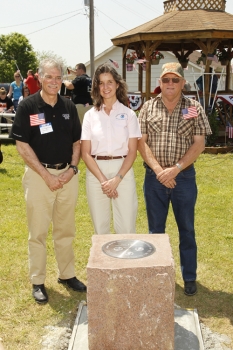Plato, Mo. Celebrates Recognition as the 2010 Census U.S. Center of Population
Townspeople, elected representatives, government officials and hundreds of students today celebrated the naming of Plato, Mo., as the 2010 Census U.S. center of population. Amid music, speeches, banners and cheers, village chairman Bob Biram welcomed the crowd, saying, “We’re proud of our village. As one of our students said, ‘we were in the middle of nowhere; now we are in the middle of everywhere.’"
At the event, U.S. Census Bureau Director Robert Groves and Juliana Blackwell, director of the National Oceanic and Atmospheric Administration’s (NOAA) National Geodetic Survey, revealed a survey disc, commemorating the national center of population as calculated by the Census Bureau and measured by the National Geodetic Survey.
Each decade after tabulating the decennial census, the Census Bureau calculates the mean center of population for the country, as well as for each state and county. The national center of population is determined as the place where an imaginary, flat, weightless and rigid map of the United States would balance perfectly if all 308,745,538 residents counted in the 2010 Census were of identical weight. Press release









